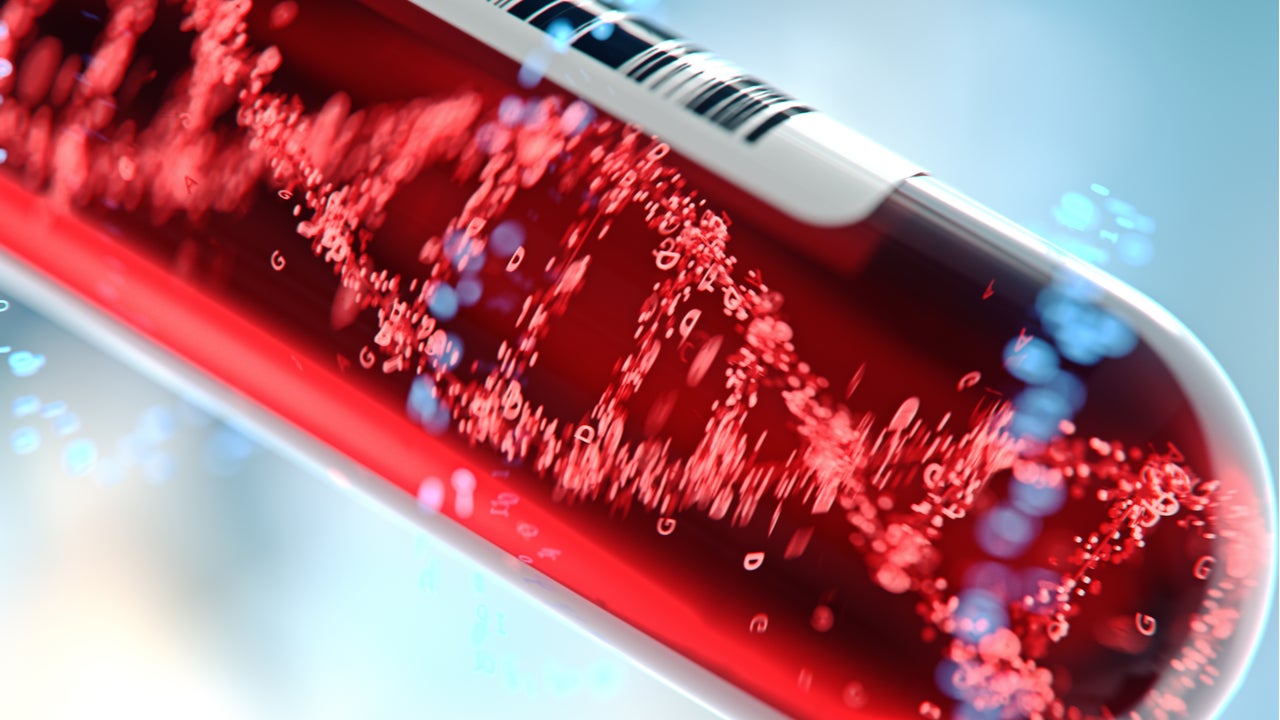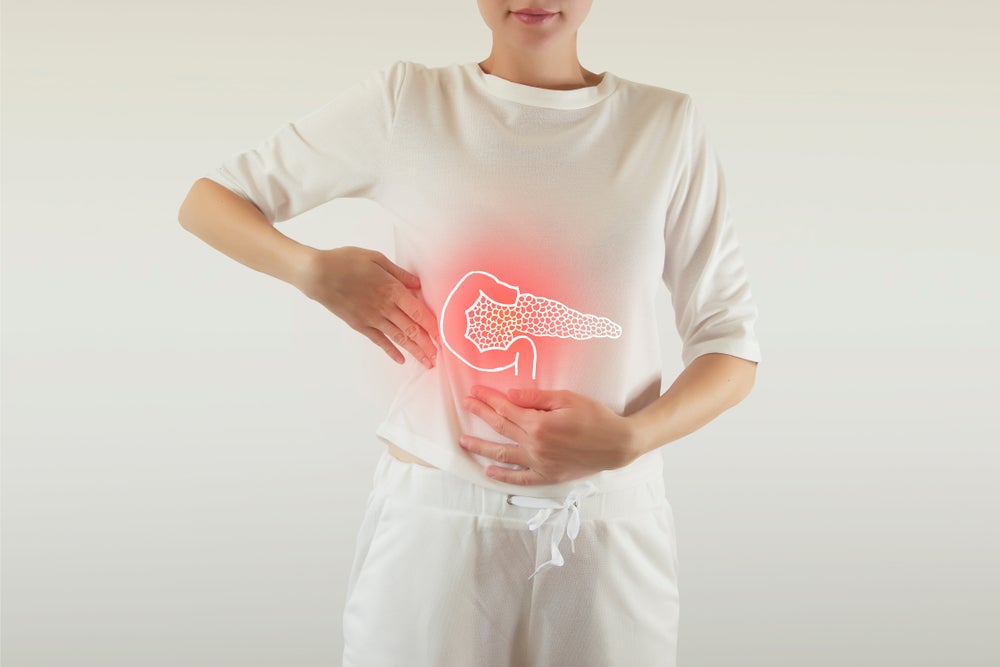
When a patient develops cancer, two different cancer-derived materials can be found in their blood: intact circulating tumour cells (CTCs) and cell-free circulating tumour DNA (cfDNA), which is released into the bloodstream as tumours grow. Clinicians can use blood drawn from a patient’s arm to search for CTCs and cfDNA that may be circulating in their bloodstream using a liquid biopsy.
Many liquid biopsy technologies are based on polymerase chain reaction (PCR), a technology that amplifies the information present within molecules and makes it easier to detect any mutations in known cancer-related genes.
Sometimes these cancerous changes can be very small, and clinicians will need to rely on deep sequencing – where a genomic region is sequenced hundreds, or even thousands, of times.
Several advantages of liquid biopsies exist. As well as being less invasive than a traditional tissue biopsy, liquid biopsies may be able to provide a more comprehensive assessment of the patient’s health by detecting material shed into the bloodstream from metastasis.
They can also be a cost-effective way to monitor mutations and could detect them up to 16 weeks before progression can be found through CT/PET scans.
Epidermal growth factor receptor (EGFR) mutated lung cancer is currently the only tumour type where liquid biopsies are used as standard of care when monitoring treatment response, but advances in the technology are being made every year and it may one day expand to further indications. For now, algorithmic decision making has come into the mix.
How well do you really know your competitors?
Access the most comprehensive Company Profiles on the market, powered by GlobalData. Save hours of research. Gain competitive edge.

Thank you!
Your download email will arrive shortly
Not ready to buy yet? Download a free sample
We are confident about the unique quality of our Company Profiles. However, we want you to make the most beneficial decision for your business, so we offer a free sample that you can download by submitting the below form
By GlobalDataDiaCarta, a precisions molecular diagnostics company, announced in April that its cfDNA biomarker algorithm was able to function as a prognostic biomarker and efficacy predictor for non-small cell lung cancer (NSCLC) patients. The algorithm was able to provide real-time evaluation of the therapy and allowed clinicians to adjust the treatment at earlier stages.
DiaCarta is now initiating a large-scale clinical development program, which will monitor cfDNA levels to determine early treatment outcomes of systemic therapy in all types of stage IV cancer.
In addition, the company will continue to evaluate cfDNA as a predictive marker for early tissue toxicity from various cancer therapies, to facilitate early therapy dose adjustments. Following clinical validation, DiaCarta will pursue regulatory approval to market its RadTox test kit worldwide for multiple cancer indications.
Medical Device Network speaks to DiaCarta chief scientific officer Mike Powell about the company’s technology.
CK: How does the RadTox liquid biopsy platform work?
MP: RadTox is a different technology that monitors dying cells. When people get treated by chemotherapy, immunotherapy or radiotherapy and their cells die, they release DNA into the blood. We can monitor the effectiveness of therapy by measuring that circulating free DNA.
We do that by taking a blood sample and doing a signal amplification called branched DNA, a methodology that uses hybridisation probes to hybridise the target DNA. We build up a Christmas tree of signal-demonstrating probes, so we can measure very small quantities of circulating free DNA in the blood of the patient.
CK: You also have a technology called QClamp – how does this differ?
MP: QClamp is a methodology for detecting low frequency mutations in patient samples. A lot of patients come in and they have cancer mutations, but you can’t find them because there’s so much wild type DNA – when you do quantitative polymerase chain reaction (qPCR) testing, you amplify wild type mutations too.
Deep sequencing is very expensive and takes a long time, so we invented a methodology for blocking the wild type DNA using a backbone modified nucleoside called xeno nucleic acid (XNA). It’s DNA, but it has no phosphate in the backbone and binds very tightly to the target sequence.
We put this into the PCR reaction, and it blocks all of the wild type and only the target mutations are amplified. You’re looking for a needle in a haystack. What we do is burn the haystack and make a stack of needles.
CK: What territories is your technology available in at the moment?
MP: It’s a global technology. It’s not restricted to any platform, it works on all qPCR machines, all sequencing machines. It works on Illumina, it works on Nanopore. We provide kits and reagents so people can measure everything themselves.
CK: How has the pandemic impacted your work?
MP: Covid-19 has really dominated what we’ve been doing recently. We have an FDA-approved Covid-19 test and two CLIA labs in California where we process them, as well as in Nanjing, China. We can detect all the mutations using saliva or nasal swabs. We’ve issued our kits to different labs around the world and it’s one of the best assays for Covid-19.




